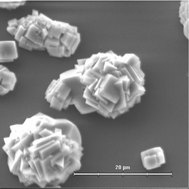Biomineralization leads to the formation of inorganic crystals with unique, ordered, refined shapes that are regulated by specific macromolecules. This process has been a source of inspiration for exploring novel approaches to the fabrication of inorganic-based surfaces and interfaces. Among those macromolecules, sulfated polymers, referred to as proteoglycans, have not received enough attention, although there is increasing evidence of their widespread occurrence in biominerals. Here we examine the available information on the nature, distribution and possible role of sulfated polymers in biomineralization, and highlight new directions to stimulate further research activities.
You have access to this article
 Please wait while we load your content...
Something went wrong. Try again?
Please wait while we load your content...
Something went wrong. Try again?


 Please wait while we load your content...
Please wait while we load your content...